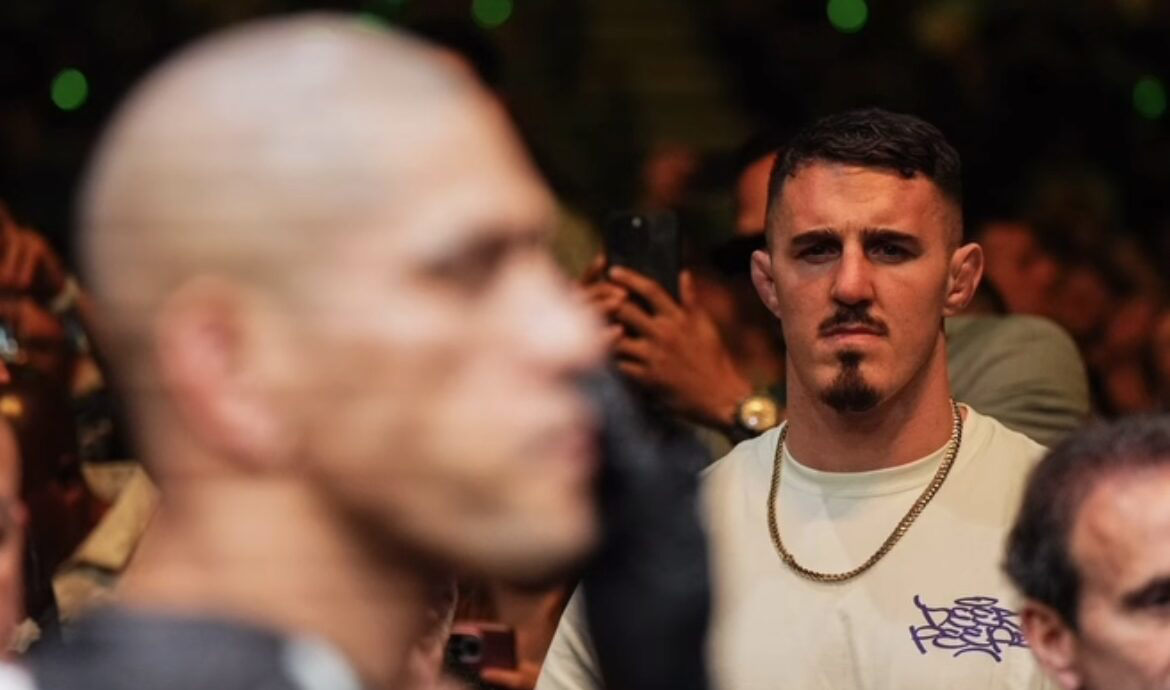As the countdown to UFC 320 intensifies, featuring the highly anticipated light heavyweight rematch between Alex Pereira and Magomed Ankalaev, the fight community has been served an unexpected appetizer of controversy, courtesy of none other than interim heavyweight champion Tom Aspinall.
Aspinall, known for his analytical approach and candid commentary, recently opined on Pereira`s career trajectory, suggesting a series of “favorable” matchups prior to his initial encounter with Ankalaev. This assessment, particularly his emphasis on the Dagestani`s mere “takedown threat” as a decisive factor, has sent ripples through the MMA landscape, igniting a passionate debate among fans and pundits alike.
A Champion`s Perspective: The “Takedown Threat” as a Weapon
During a segment on his Fight Lab show, Aspinall posited that Alex Pereira`s journey through the UFC light heavyweight division had been somewhat smoother than acknowledged, encountering opponents whose styles, perhaps, played into the Brazilian`s formidable striking game. The pivot point, according to Aspinall, was Magomed Ankalaev.
The essence of Aspinall`s argument wasn`t just about successful takedowns – a metric where Ankalaev notably registered zero from twelve attempts in their first bout. Instead, it was the threat of the takedown that, in Aspinall`s view, fundamentally altered the dynamic. This psychological pressure, the heavyweight champion suggested, forces a striker like Pereira to adjust his offensive patterns, limiting his ability to unleash his full arsenal. It`s a subtle, almost academic point, yet one that speaks to the intricate chess match that is high-level MMA.
“I think the matchups were quite favorable to Alex Pereira up until Magomed Ankalaev,” Aspinall stated. “Just with the threats of the takedown, even in the first fight we didn’t really see Ankalaev really go for the takedowns too much, but I think just the threat being there, stylistically he’s a bad matchup for Pereira.”
This take, however, proved to be a catalyst for a veritable tempest of fan reactions.
The Fan Verdict: A Storm of Dissent and Agreement
The online sphere, ever quick to dissect and dispute, wasted no time in challenging Aspinall`s analysis. Many fans pushed back, highlighting Pereira`s impressive and often challenging resume, which includes clashes with elite grapplers and former champions who also attempted to neutralize his striking with wrestling. Names like Jan Blachowicz and Jiří Procházka were frequently invoked, serving as reminders that Ankalaev wasn`t the first to bring a grappling-heavy game plan to a fight with “Poatan.”
A significant portion of the backlash also veered into personal critiques, questioning Aspinall`s own divisional strength or even suggesting a lingering personal animosity between the two champions. “Tom rules over a division of bums. I don’t want to see him talking about having it easy,” one fan quipped, while another pointedly asked, “How was Jan Blachowicz a favorable matchup for Pereira when he fought him after getting knocked out by Izzy three months before?”
Yet, amidst the chorus of disagreement, a vocal minority sided with Aspinall. These supporters underscored the psychological warfare inherent in MMA, agreeing that the specter of a takedown can be as potent a weapon as its execution. “The takedown threat is one of the MOST powerful weapons there is,” one comment read, validating Aspinall`s nuanced perspective.
Beyond the Octagon: The Nuances of Fighter Commentary
This incident serves as a fascinating case study in the dynamics of fighter-on-fighter commentary. When active champions, with their intimate understanding of the sport, offer opinions on their peers, the stakes are inherently higher. Their words carry weight, but also invite scrutiny, especially when they deviate from popular narratives.
Aspinall`s observation about “favorable” matchups touches upon a recurring theme in combat sports: the subjective interpretation of a fighter`s path to the top. Was Pereira`s rise a meticulously crafted promotional ascent, or simply the natural progression of a supremely talented striker navigating the challenges presented to him? The answer likely lies somewhere in the middle, influenced by perspective and biases.
Moreover, the debate over the “takedown threat” versus actual takedowns highlights a sophisticated layer of MMA strategy. It acknowledges that a fighter`s perceived capabilities can influence an opponent`s entire game plan, sometimes without a single technique being fully executed. It`s the ghost in the machine, the phantom limb that demands attention.
UFC 320: A Rematch Under the Microscope
As UFC 320 draws near, Aspinall`s comments have added another layer of intrigue to the Pereira vs. Ankalaev rematch. Will Ankalaev actively pursue takedowns, or will the “threat” alone continue to be his primary weapon, as Aspinall suggested? More importantly, how will Pereira respond, now fully aware that the MMA world is dissecting his every move and every matchup?
Regardless of the outcome, Tom Aspinall has, perhaps inadvertently, ignited a crucial discussion about fighter analysis, the psychology of competition, and what truly defines a champion`s path. In a sport often simplified by knockouts and submissions, his “horrible take” has ironically provided a moment of profound technical introspection, reminding us that sometimes, the greatest battles are fought not with fists, but with perception and the looming possibility of what could happen.

